Study Supports Elimination of Hundreds of Justice Courts
The New York Law Journal by Joel Stashenko - September 18, 2008
ALBANY - A commission appointed by Chief Judge Judith S. Kaye yesterday recommended the elimination of as many as 500 of the 1,250 town and village courts in New York state because of their cost, antiquated facilities or duplication of services with other justice courts. While acknowledging that New Yorkers are in general "very supportive" of their local courts and justices, commission chairman Carey R. Dunne said that data collected by the commission on justice court caseloads, revenues and locations makes a persuasive argument for a significant consolidation of the centuries-old local court system. "We're convinced that if you sit down with the relevant stakeholders within that county and representatives of the communities and the localities of the county that are affected by this, and show them where each court is and how it can be made better and how they could save money, that should be able to work," Mr. Dunne said yesterday at a news conference at the Court of Appeals. "It should work regardless of whether the economy is dire or not." The consolidation plan was among the recommendations made yesterday by the Special Commission on the Future of the New York State Courts, a panel originally formed by Chief Judge Kaye to report on ways to streamline the court system (NYLJ, July 18, 2006). The chief judge then asked the commission to make a similar study of the town and village courts in which some 2,150 justices hear 2 million cases a year. Critics have attacked the system for dispensing justice in a wildly uneven fashion in a hodgepodge of settings.
Other recommendations by Mr. Dunne's commission included:
• Having state court administrators set minimum standards for the quality of justice court facilities, resources and security.
• Setting a minimum age requirement of 25 for all incoming justices and requiring all new justices to have completed at least two years of college.
• Allowing criminal defendants facing misdemeanor or felony charges to opt out of appearing before non-attorney justices and have their cases heard by an attorney judge.
• Improving state funding for town and village courts, especially through the Justice Court Assistance Program.
The commission largely steered clear of two other issues that have caused controversy about prior reform proposals. Mr. Dunne said some of the 31 members of the commission were passionately in favor of mandating that only attorneys serve as magistrates and replacing town and village courts with a district court system. The commission concluded, however, that there is not enough support for either idea in the public or the state Legislature to make their recommendation practical at this time. "Instead, we've come up with proposals that we believe will improve the quality and character of these courts, that will better protect the rights of defendants and litigants and that will do so, not just in our lifetimes or our children's lifetimes, but in the foreseeable future," Mr. Dunne said. The New York State and New York City Bar associations both back an attorney-only judiciary in town and village courts, where non-attorney judges outnumber lawyer judges about 70 percent to 30 percent (NYLJ, Feb. 4).
'Plagued by Problems'
Commission members visited 100 local courts and held four public hearings around the state last year (NYLJ, June 14, 2007). Chief Judge Kaye called the commission's 292-page report a "really magnificent blueprint" for improving the town and village courts and the most extensive study of justice courts in New York ever completed. "This report pulls no punches," she said. "It concludes that the justice court system as a whole is working adequately, but also that it is plagued by problems that are not easily resolved." Mr. Dunne, a partner at Davis Polk & Wardwell, said a consolidation of the system is crucial. In addition to being expensive to the local taxpayers who fund the courts, Mr. Dunne said the current system also strains the resources of the county district attorneys and assigned defense counsels who routinely have to appear in dozens of different courts, While he had no estimate of cost savings if the commission's consolidation plan was accepted by the Legislature and the governor, Mr. Dunne said the savings that could be achieved could be used to improve the court facilities that remain open and to improve the salaries of justices with an eye toward luring more attorneys to the local benches. The commission produced analyses of the justice courts in the 55 counties north of New York City using per-court caseloads and revenue and their proximity to other justice courts. Based on that information, the commission staff produced "presumptive combination ranges" for how many justice courts in each county should be candidates for consolidation with other justice courts.
The commission did not identify specific courts that should be merged. Rather, for instance, it said that in Orange County between four and 11 justice courts could be eliminated out of its current 34. Statewide, Mr. Dunne said the commission identified that between 319 and 517 courts could be eliminated. The commission said the two Long Island counties, Nassau and Suffolk, were not included because their district court systems make comparisons with the justice courts upstate impossible. New York City has no justice courts. The commission recommended the appointment of county-level panels in each of the counties to choose the local courts to be consolidated. Under its plan, their recommendations would go into law unless overruled by a super-majority, or two-thirds, of the local county legislatures. State panels would be created by the Legislature to oversee the county-level work and ensure that consolidations were being done fairly on a statewide basis. The commission proposed leaving it up to localities and counties to decide whether the local justice positions should be eliminated or justices reassigned to other benches within the county, Mr. Dunne said. The consolidation plan would be a tough sell in the Legislature, where lawmakers, especially from upstate, generally defend the town and village court system.
Senator George Winner Jr., R-Elmira, said rural dwellers are protective of their "sense of hometown justice" as expressed through the town and village courts. "There is a little bit of a feeling of patronizing of rural areas from these types of commissions," he said. "No question about it. I am not belittling their good work, but I do believe there is a feeling of a bias against rural New York." Mr. Winner said a better approach to wholesale consolidation of courts, at least at first, was embodied in a bill (A6645/S3228) he got enacted into law this year allowing two or more adjacent towns to elect one common justice to preside over their town courts. "Authorizing adjoining towns to consolidate in that fashion is probably a better first step forward to see if that is something that would be cost-effective for local government," said Mr. Winner, who addressed the Dunne commission last year during a hearing in Ithaca. Mark G. Farrell, a member of the Dunne commission and president of the state Magistrates Association, praised the group's report yesterday, but said the magistrates' group is opposed to the forced consolidation of justice courts and to the "opt-out" option of letting defendants demand to appear before justices who are attorneys. While the commission report said that most of its members agreed that "in a perfect world, all local justice would be attorneys," it defended the work of non-attorneys and found there is no evidence that non-lawyers are more apt to commit judicial misconduct than attorneys.
Greg D. Lubow, a solo practitioner from Tannersville who argued before a commission hearing in Albany, said yesterday he believes lawyers are better able to understanding legal issues at trial. "I would have liked the report to have laid out the constitutional standards to which we aspire," Mr. Lubow said. "That is the justice court system that the citizens of New York deserve." Some recommendations by the commission are extensions of the Unified Court System's Action Plan for the Justice Courts, including the expansion of the Justice Court Assistance Fund and heightened training for justices. Chief Administrative Judge Ann Pfau, who released a two-year update of the action plan yesterday, said court administrators would increase the current $5 million for the Justice Court Assistance Fund in the next state budget. She said yesterday it is too soon to say how much more the state will be able to funnel to the town and village courts. Chief Judge Kaye said the setting of minimum standards for town and village court facilities is also something the courts can do without legislative approval. She said she would study the other recommendations and consider other actions the courts can take unilaterally to improve the justice courts. Joel.Stashenko@incisivemedia.com
MLK said: "Injustice Anywhere is a Threat to Justice Everywhere"
End Corruption in the Courts!
Court employee, judge or citizen - Report Corruption in any Court Today !! As of June 15, 2016, we've received over 142,500 tips...KEEP THEM COMING !! Email: CorruptCourts@gmail.com
Most Read Stories
- Tembeckjian's Corrupt Judicial 'Ethics' Commission Out of Control
- As NY Judges' Pay Fiasco Grows, Judicial 'Ethics' Chief Enjoys Public-Paid Perks
- New York Judges Disgraced Again
- Wall Street Journal: When our Trusted Officials Lie
- Massive Attorney Conflict in Madoff Scam
- FBI Probes Threats on Federal Witnesses in New York Ethics Scandal
- Federal Judge: "But you destroyed the faith of the people in their government."
- Attorney Gives New Meaning to Oral Argument
- Wannabe Judge Attorney Writes About Ethical Dilemmas SHE Failed to Report
- 3 Judges Covered Crony's 9/11 Donation Fraud
- Former NY State Chief Court Clerk Sues Judges in Federal Court
- Concealing the Truth at the Attorney Ethics Committee
- NY Ethics Scandal Tied to International Espionage Scheme
- Westchester Surrogate's Court's Dastardly Deeds
Thursday, September 18, 2008
Subscribe to:
Post Comments (Atom)
Blog Archive
-
▼
2008
(545)
-
▼
September
(34)
- Acting U.S. Attorney To Investigate Justice Depart...
- Outrage: Elderly Tax Lawyer Told He Can't Write Of...
- Gov. Paterson Taking Charge: Vetos Court Power Scam
- Judge Caught Driving Drunk in Drag Steers Way to L...
- More insight into underbelly of corruption
- Deskovic Calls for Jeanine Pirro Boycott
- Gov. Paterson Seeks Reversal of Judges' Pay Order
- Attorney Reports Self to Disciplinary Committee
- Officer of Court Fails at Attempt to Blame Casinos...
- Request to Gov. Paterson to Confront Court Corruption
- Only 7 Federal Judges Have Been Removed
- Client-Stripper's private dancing Gets Lawyer Susp...
- Memories of Corrupt Judicial Cross-Endorsements
- New Websites and Ad Campaign to Confront Corrupt C...
- Federal Judge Weinstein Chops 2 Million off Legal ...
- Federal Judge Impeachment; First in 20 years
- Kaye's Court Clean-Up: Dollar Short, Day Late
- Legal Experts Need to Speak Up More Often
- Legal Malpractice Suit Against Attorney, Permitted...
- Veterans of Bench Apply To Replace Kaye as Chief
- Federal Judge Suspended On Misconduct Charges
- Feds: While Corrupting Congress and Cheating Clien...
- Top Priority: Anti-Corruption Campaign
- Revisited Legal Strategy: Just Have Witness Killed...
- Outsider to Preside over Federal Judge's Sex Crime...
- Public Servants for Sale: cheaply
- 'Officer of Court' Mail and Wire Fraud Case to Pro...
- Ex-FBI Agent Faces Murder Trial; Another: IRS Surr...
- Buffalo News: Prison Likely for Former Judge Pimp
- Former NY Judge Admits Providing Prostitutes for Pals
- Judge Pleads Not Guilty to Sex Crime Charges
- More Make-Believe from Commission on Judicial Conduct
- Public Demand: NYS Chief Judge Margarita Lopez Torres
- Clone This Judge !!
-
▼
September
(34)
See Video of Senator John L. Sampson's 1st Hearing on Court 'Ethics' Corruption
The first hearing, held in Albany on June 8, 2009 hearing is on two videos:
Video of 1st Hearing on Court 'Ethics' Corruption
The June 8, 2009 hearing is on two videos:





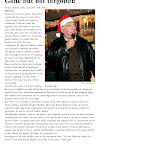

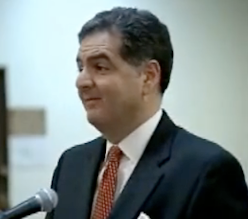
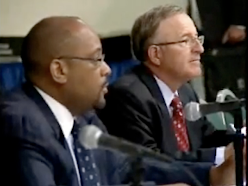
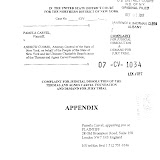
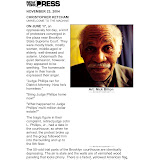
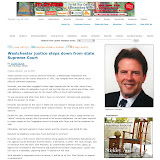
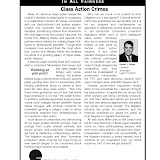

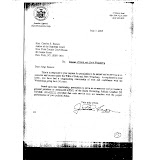
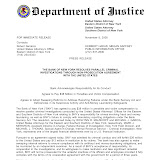
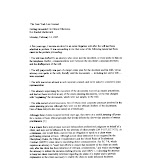

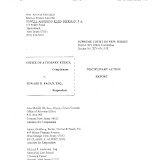
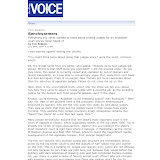

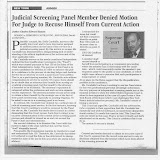

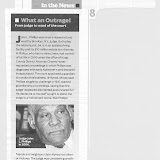
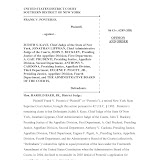
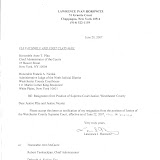
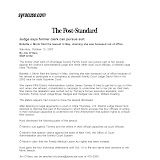
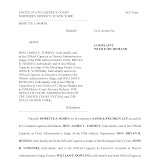

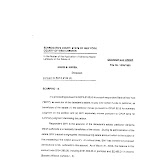
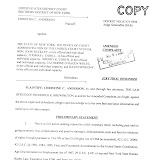

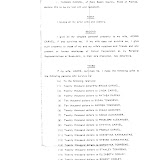
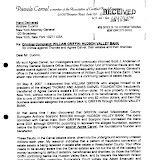
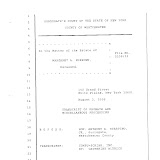
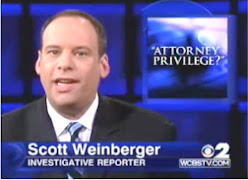
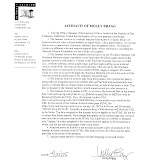

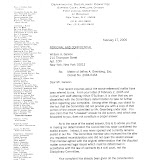
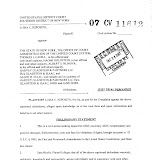
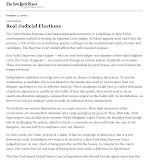
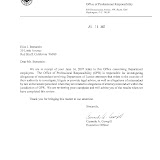
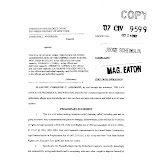
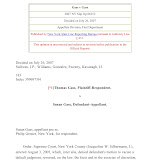
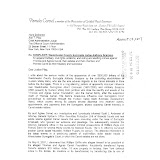

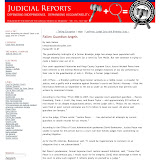
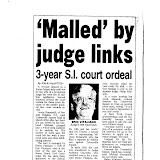

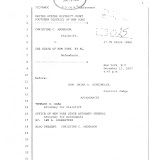
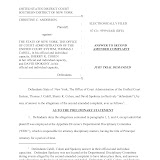
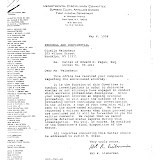
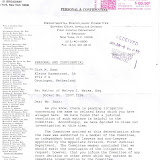
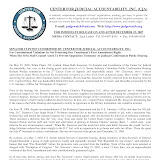
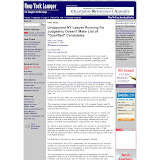
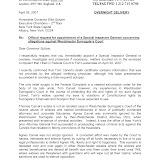
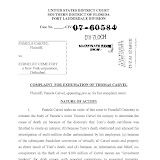
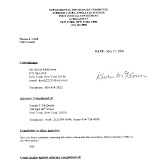
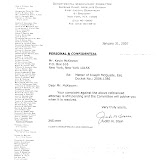
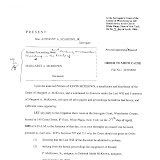
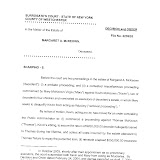
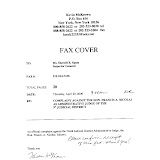
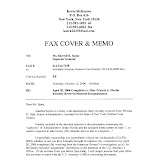
4 comments:
Judy kaye wouldn't dare to think of reform, by curing it through the largest and most damaging problem in the judicial entity..the elected judiciary!
They wouldn't remotely, tolerate her breaking up their criminal activities , because they are lawyers...just like her!
Yes, I am sure the town justices need a lot of clean-up, but to start at the bottom is ludicrous.
Start at the top...where the corruption and piggotry is rampant and clean that up...thus the bottom will clean up well from there!
A typical Kaye project...make noise about clean-up and reform, but take out the least powerful to do it, and never even attempt to go near the surface of the actual problem...such a phony pig you are KAYE...GOOD RIDDANCE!
Why won't "Kaye Go Awaye"
Thanks to Judge Kaye and her corrupt court sytem I spent yesterday at the library trying to help my kids with their homework while my Ex-wife in another of the numerous depression fueled rant screamed (screached) at me calling me a deadbeat as well as other expletives and said quote "Your such an a-hole, you want to show your face at everything with the girls" (this was a reference to the fact that I went to the parent teacher conference)
I sat, as always, with my face in my hands until her rage minimized
and asked her if she is ok. Then I went back to help the kids with their homework and play some soccer.
This is how my life is (and my daughters) due to the leadership of Kaye and the Corrupt Westchester County Court system.
And now they want to put the lawyers in charge of the smaller courts.? Who is going to monitor that disaster/ The 9th judical attorney grievance committee? The OCA? NY courts are useless and since Judge Kaye prefers it that way. GO AWAY JUDGE KAYE it's time for a new HACK
Kaye goes after mothers too and the judges and attorneys under her command are even helping with the sexual exploitation of minors in child custody cases. I wonder if she and Judge Nicoali get pay extra for child porn after the children are removed from the safe mother to be place with the sexual predator father? (Only speaking about bad fathers not good Dads)
what I have seen since approximately 1990 happening to the NYState Courts is disgusting. Judge Judith Kaye is a pawn of the legal establishment and is acting on their behalf on this issue. The State Judges have found a gold mine that they want to acquire. This could be called the selected attorney employment act because 5 to 10 years (or sooner) down the road all these positions will be filled by more expensive member of the NYState Judiciary. Kaye and her friends are con artists pulling a sham on the taxpayers of NYState.
Post a Comment